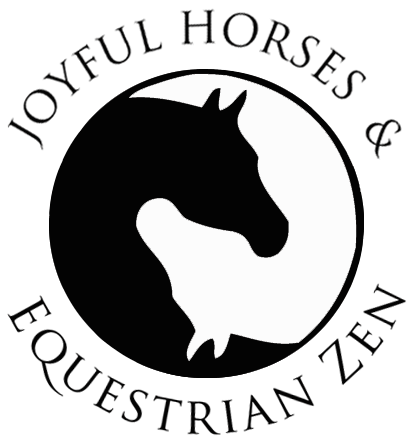I have looked back upon my initial start using positive reinforcement to train animals and have tried to figure out how I could have gone so far down the path of Natural Horsemanship and traditional training before finding my way back via Behavioral Science and Clicker Training. Many of the same challenges I faced are still present for people who are just now learning how to use positive reinforcement and force free training with their equines (& other animals).
A few common reasons people get derailed from pursuing force free positive reinforcement training is:
– a lack of knowledge,
– not having a good support group,
– and the fear of being inadequate.
The first thing that derailed my force free ideology when I was a teenager was listening to people who said that my lack of force was going to make my horse dangerous. When my horse showed behaviors that other people said were signs of aggression, I was pressured to take a whip to make him back off when people were around. My horse and I were both confused, but I was willing to do this in order to keep my horse. At the time I had no one around that could tell me that my horse was most likely experiencing pain from ulcers since his mother and only pasture mate had died and he had been recently gelded. I knew he was calling a lot to the horses across the street, and I knew he had lost weight, but there was no information available to me at the time to clue me into any other options besides listening to other people around who had horses. Now I try to make sure all of my students have a solid understanding of how horsekeeping issues can affect your horse’s attitude, training progress and overall health. One of the Training Foundation courses I offer online is our Horsekeeping course which covers everything from diet, feet, living conditions, exercise and equine enrichment.
I think the next piece that made me follow in the wrong people’s footsteps training-wise was when my beloved horse was diagnosed with a degenerative joint disease. I blamed myself for his diagnosis despite the fact that he was a quarter horse with short upright pasterns and we had done probably 2500 miles of rides. The guilt I felt resulted in me throwing away everything I thought I knew and instead trying to copy people who seemed to know more than myself. That is when I started learning Natural Horsemanship and learning how to show horses in English & Western Pleasure. I started taking lessons from someone who seemed to really care for her horses and thought that there was something seriously wrong with me since I always left my riding lessons crying. I felt that holding tight onto a horse’s bit was wrong, but my instructor said it wasn’t a tight hold, it was just getting the horse “round”. I later studied with classical dressage trainers and learned how to get horses to find their own balance and carry themselves, but it was always to easy to use pressure when a horse had a bit in their mouth.
After decades of teaching people to ride with as little negative impact on their horse’s body as possible, I realized that most people don’t have the time to learn how to use reins such that they don’t inadvertently pull a horse out of balance or create painful pressure in the horse’s mouth. So I switched all of my lesson horses to bitless bridles. But it wasn’t until I learned Clicker Training from Peggy Hogan and took a deep dive into Behavioral Science and Learning Theory that I had the tools to help people learn to use positive Reinforcement in their daily handling of their animals.
Please know that the Balance Point community is here to help you on your journey. With a support group and science, staying on course with our ethics becomes less of a struggle and more of an adventure. I hope you’ll join us.
